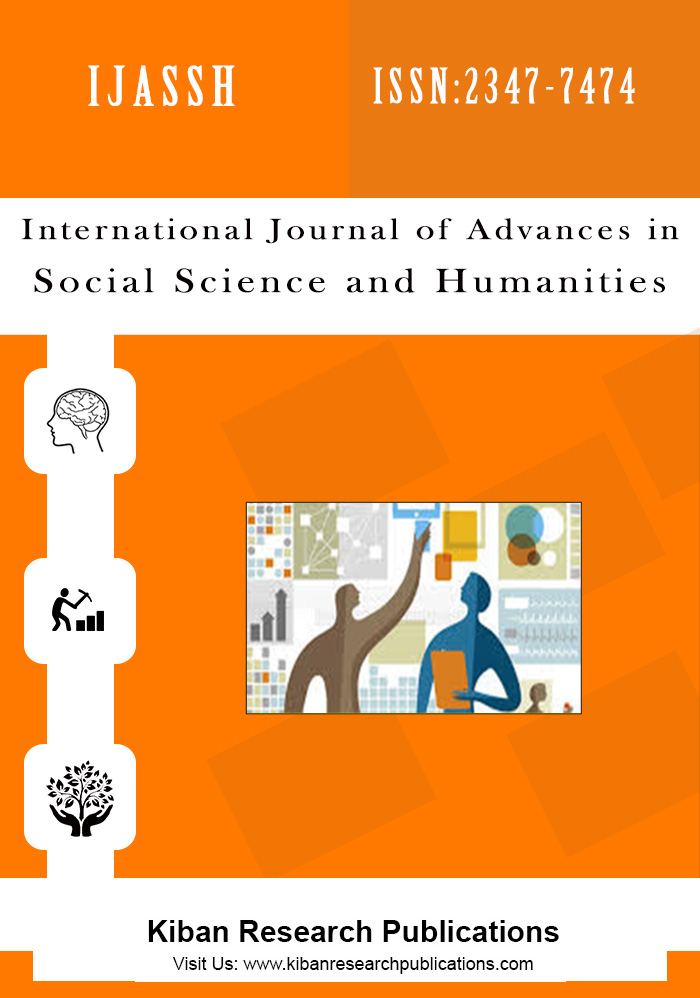A Corpus-Based Analysis of Collocations in Chinese and American Letters to Shareholders
Abstract
The letter to shareholder is a particularly important promotional genre and is published annually to report company financial performance, and also help manage the relationship between a company and its present as well as potential investors. This corpus-based study of keywords and their collocations investigates the letters to shareholders from 10 Chinese and 10 American Fortune 500 companies. The results show that: 1) the most concerned business themes are manifested in the two corpora, which involve the growth of business. What’s more, Chinese companies concerns more about business itself and the future development of business, while American companies also stress on the theme of customer; 2) the collocation analysis of these main concerns reveal that Chinese enterprises repeatedly mentioned the innovation and uniqueness of their business models, while American companies value whether their business models are right and diversified. In addition, Chinese companies seem to focus more about the status of growth than their American counterparts; 3) both Chinese and American enterprises favor the long-term development of their business. There are differences in featuring the status of growth: Chinese companies tend to enhance confidence and sense of dependence by repeatedly mentioning the status of growth both in home and around the globe, while American companies tend to use precise numbers to impress their investors and enhance their own reliable corporate images.
References
Amernic, C. J. Detecting Linguistic Traces of Destructive Narcissism At-a-Distance in a CEO’s Letter to Shareholders. Journal of Business Ethics.
Baker, P. (2004). Querying Keywords Questions of Difference, Frequency, and Sense in Keywords Analysis. Journal of English Linguistics, 32(4), 346-359.
Baker, P. (2006). Using Corpora in Discourse Analysis. London: Continuum International Publishing.
Bujaki, M., & Mcconomy, B. (2012). Metaphor in Nortel’s letters to shareholders 1997â€2006. Accounting Auditing & Accountability Journal, 25(7), 1113-1139.
De Groot, E. B. (2008). English Annual Reports in Europe: A Study on the Identification and Reception of Genre Characteristics in Multimodal Annual Reports Originating in the Netherlands and in the United Kingdom. Bmc Gastroenterology, 5(35), 5577-5581.
Fanelli, & Grasselli. (2005). Defeating the Minotaur: The Construction of CEO Charisma on the US Stock Market. Public Administration Review, 27(6), 688-692.
Firth, J. R. (1957). Papers in Linguistics 1934-1951. London: University Press.
Halliday, M. A. K. (1966). Lexis as a Linguistic Level C.E. Bazell, J.C.Catford, M.A.K. Halliday and R. Robins (eds.) In Memories of J.R. Firth (pp. 148-162). London: Longmans.
Hyland, K. (1998). Exploring Corporate Rhetoric: Metadiscourse in the CEO’s Letter. Journal of Business Communication, 35(2), 224-244.
Jones, M. J. (1988). A Longitudinal Study of the Readability of the Chairman’s Narratives in the Corporate Reports of a UK Company. Accounting & Business Research, 18(72), 297-305.
Kendall, J. E. (1993). Good and Evil in the Chairmen’s ‘Boiler Plate’: An Analysis of Corporate Visions of the 1970s. Organization Studies, 14(4), 571-592.
Kenny, D. (2011). Lexis and Creativity in Translation: A Corpus-based Study. Manchester: St. Jerome.
Louw, B. (1993). Irony in the Text or Insincerity in the Writer? — The Diagnostic Potential of Semantic Prosodies Text and technology: In honour of John Sinclair (pp. 157-176): John Benjamins Publishing.
Mobasher, A., & Ali, A. M. (2015). Exploring the macrostructure of management forewords of corporate annual reports. International Journal of Applied Linguistics & English Literature, 4(1), 14-25.
Palmer, I., King, A. W., & Kelleher, D. (2003). Listening to Jack: GE’s change conversations with shareholders. Journal of Organizational Change Management, 17(6), 593-614.
Poole, R. (2013). Good Times, Bad Times: A Keyword Analysis of Letters to Shareholders of Two Fortune 500 Banking Institutions. International Journal of Business Communication(4).
Poole, R. (2017). “New opportunities†and “Strong performanceâ€: Evaluative adjectives in letters to shareholders and potential for pedagogically-downsized specialized corpora. English for Specific Purposes, 47, 40-51.
Sinclair, J. (1991). Corpus, Concordance, Collocation. Oxford: Oxford University Press.
Sznajder, H. S. (2010). A corpus-based evaluation of metaphors in a business English textbook. English for Specific Purposes, 29(1), 30-42.
Walker, C. (2011). How a corpus-based study of the factors which influence collocation can help in the teaching of business English. English for Specific Purposes, 30(2), 101-112.
胡春雨, & æŽæ—å¦. (2018). 基于è¯æ–™åº“的腾讯亚马逊致股东信元è¯è¯ç ”究. 《外è¯å¦åˆŠã€‹(1), 24-32.
胡春雨, & è°é‡‘ç³. (2017). 汉è¯è‡´è‚¡ä¸œä¿¡ä¸çš„éšå–»åŠè‹±è¯‘ç ”ç©¶. 《天津外国è¯å¤§å¦å¦æŠ¥ã€‹, 24(1), 25-31.
æŽæ–‡ä¸. (2017). æé…的界定ã€æµ‹é‡ä¸Žä¸å›½å¦ä¹ 者è¯æ–™åº“æé…分æž. 《外è¯æ•™å¦ã€‹(02).
钱嘉慧, & 王立éž. (2015). 英文ä¼ä¸šå¹´æŠ¥è¯ç¯‡ä¸æ€åº¦è¯„ä»·çš„è¯æ–™åº“考察åŠåˆ†æž. 商务外è¯ç ”究.
å«ä¹ƒå…´. (2002). 基于è¯æ–™åº“å’Œè¯æ–™åº“驱动的è¯è¯æé…ç ”ç©¶. 《当代è¯è¨€å¦ã€‹, 4(2), 101-114.




